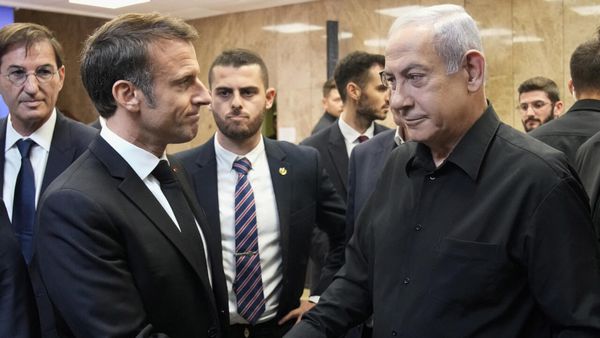![Figures in Extinction [3.0] requiem.](https://media.guim.co.uk/027504dc5092ea64308f813635b044cc955e471a/0_0_3543_2364/1000.jpg)
One of Crystal Pite’s most distinctive qualities as a choreographer is her willingness to grapple with the society around her, to craft works that engage with the issues of our time – bureaucratic bungling (Revisor), global diplomacy (The Statement), mass migration (Light of Passage).
Theatre guru Simon McBurney of the groundbreaking Complicité has a similar belief in the power of art to change the world. Together over the past four years, with the exceptional dancers of Nederlands Dans Theater, they have forged Figures in Extinction – a work of serious thought, urgent entreaty and utterly sumptuous dance around the questions of human-made climate change and its effect on the planet.
The evening-long show is made of three separate works, and it was the third that received its premiere last week at Aviva Studios, home of Factory International. Pite led the creation of the first, McBurney the second, and the third is credited as an equal partnership. But as a whole, the piece has extraordinary sweep and coherence. Each begins with all the dancers on stage and a question being asked. Images run from one to the other – the skeleton of a cheetah and the pinioned movements of a frog seen in the first section return in the last. The effect is one of cumulative richness forged from separate ingredients.
Figures in Extinction [1.0] the list is a mournful litany of lost nature. Pite creates an encyclopedia of haunting pictures, suggestive of the creatures that are extinct but not mimicking them. In conjuring lost animals through human bodies, the work generates exactly the state of empathy its soundtrack pleads for.
The second part, [2.0] but then you come to the humans, starts with a phalanx of suited dancers in suits on chairs, transfixed by their phones as urgent events unfold around them. As it develops, the movement embodies the dense arguments unfolding on the voiceover, about the left and right brain and the ways in which we have created a society that – quoting Einstein – “honours the servant” by promoting the rational mind over the intuitive, “a sacred gift”.
Finally, [3.0] requiem explores ideas of death and time, the relationship between the living and the dead, and the faint hope that springs from the continuity of both. With music that ranges from Mozart and Fauré to Schnittke and Ice Spice, and scenes around a hospital bed where relatives lip-sync their grief over the dying while shadowy dancers seem to represent the dead, this section is the most diffuse of the three.
Yet it is astonishingly moving in its willingness to grapple with the philosophical notions of extinction, on both a personal and a planetary level. Pite creates choreography that seems to stretch the dancers to their limits, their bodies so expressive, so impassioned, as they form into tableaux and patterns, that at one moment look like Géricault’s The Raft of the Medusa and at the next like a medical documentary. Group movement breaks into solos and aching duets and finally resolves into stillness. It’s textured, varied, utterly beautiful.
In each section, Tom Visser’s astonishing lighting, which constantly switches and highlights mood, Owen Belton and Benjamin Grant’s compositions and sound designs, which blend classical melody with the sound of the street, and Jay Gower Taylor and Michael Levine’s fluid, evocative design all add to the weight and power of the trilogy. It’s a towering achievement – a challenge to do more, think more and feel more.
• This article was amended on 25 February 2025 to include design attribution to Michael Levine alongside Jay Gower Taylor.







